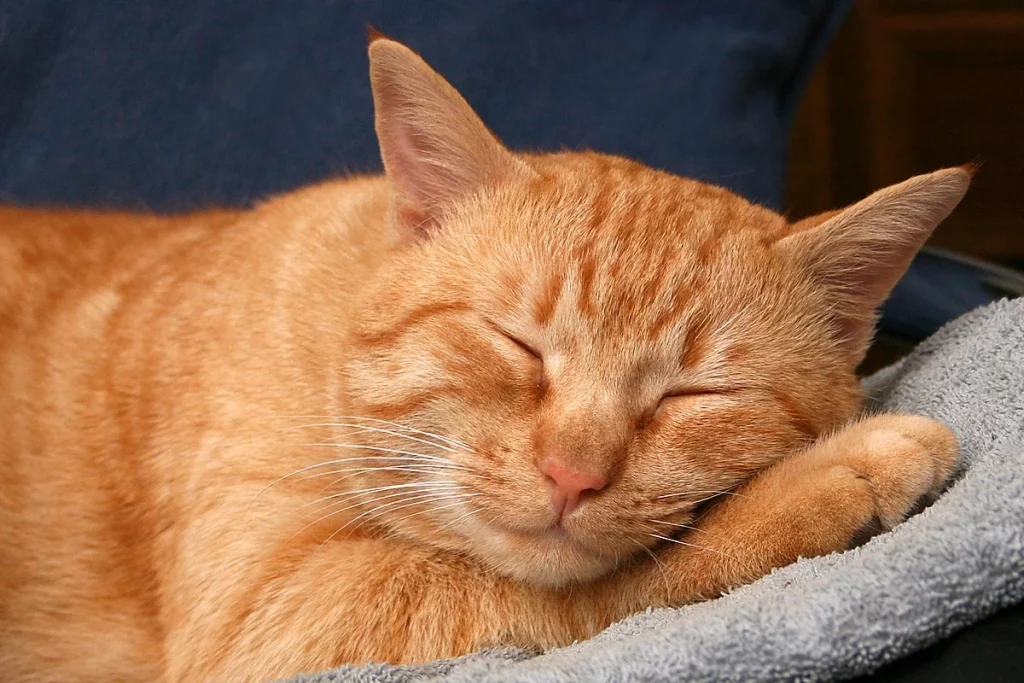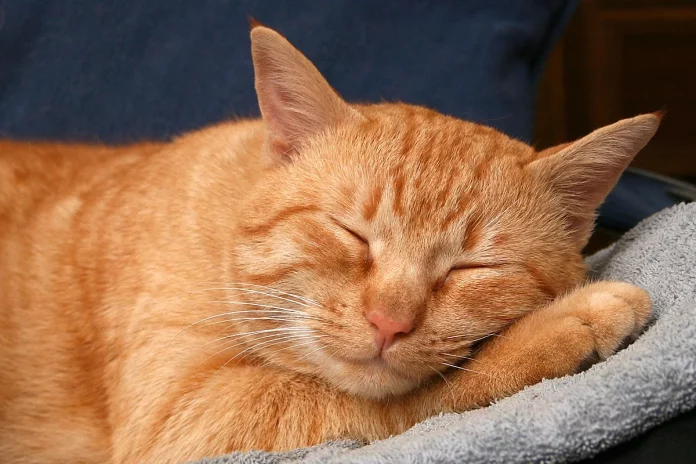Among inquisitive feline caretakers, interest often arises regarding the prospect of sharing enticing human food items like pepperoni with cats. However, these lipid-rich meat snacks crafted to entice human taste buds frequently conflict with cats’ stringent nutritional requirements as obligate carnivores. Therefore, responsible cat owners must thoroughly research the implications of offering pepperoni snacks prior to incorporating them into feline diets. This guide aims to comprehensively examine if and how pepperoni could potentially complement cats’ overall health and dietary needs.
Understanding the Cat’s Digestive System
Felines possess a digestive system optimized through evolution for deriving animal protein and fat from consuming fresh prey and flesh. Their relatively simple gastrointestinal tract and rapid food transit time allows wild cats to effectively hunt and consume small prey. Domestic cats lack specific enzymes required to properly break down and digest complex carbohydrates and plant matter. Additionally, their short intestinal structure makes them intolerant to consuming exceedingly rich, salty, or spicy foods. These physiological factors affect cats’ ability to digest pepperoni and other salted meat products.
Nutritional Needs of Cats
To thrive, cats require ample bioavailable protein obtained from digesting meat as well as animal fat as their main calorie and energy source. Cats lack any substantial nutritional need for carbohydrates within their diet and must acquire indispensable amino acids like taurine exclusively through animal protein intake. Compared to plant-eating mammals, cats also require higher levels of vitamins A and B, fatty acids, calcium, and phosphorus only available in sufficient quantities from animal flesh. Overall, pepperoni offers negligible nutritional value for meeting cats’ dietary requirements.

Pepperoni Composition
In terms of ingredients, pepperoni contains pork and beef trimmings along with various spices, salt, dextrose or sugar, and preservatives to enable curing and preservation. The spicy seasonings within pepperoni such as paprika, garlic, chili pepper, and cayenne provide considerable heat and zing to appeal to human palates. Additionally, the notably high sodium content of pepperoni contributes a salty flavor to the cured meat that humans find quite delicious. For human consumption, pepperoni can offer a decent source of protein and fat when consumed in moderation. However, for cats, pepperoni’s complex ingredients hold minimal nutritional merits while posing certain health risks.
The Dangers of Pepperoni for Cats
While the fatty, savory properties of pepperoni make it enticing for humans, it can become problematic when fed to cats for several critical reasons:
- The high sodium levels present a risk of exacerbating kidney issues in susceptible cats by placing excess strain on the delicate feline renal system.
- The spicy seasonings and hot peppers commonly used in pepperoni recipes may irritate the gastrointestinal tract of cats when consumed.
- The significant fat content also poses dangers regarding the potential to induce life-threatening cases of pancreatitis within cats.
- Toxic preservatives like nitrates used in cured pepperoni products present health hazards to cats in high amounts.
Overall, these risks appear to outweigh any concrete benefits cats could possibly derive solely from the nominal meat protein within pepperoni. If aiming to provide cats an occasional meat-based treat for enrichment, significantly safer options exist.
How Cats React to Spicy Food
According to available research, most cats appear to intrinsically dislike or merely tolerate spicy pepperoni in only very minute amounts when offered by owners. The concentrated heat and pungent flavors from seasonings within pepperoni likely surpass cats’ threshold for pleasurable sensory stimulation. Eating more than tiny sample lick amounts frequently induces exaggerated lip smacking, rapid head shaking, and tongue licking in cats indicating gastric distress. Vomiting, diarrhea, and peripheral tissue edema signal more alarming cases of extreme pepperoni-related gastric upset that require urgent veterinary medical treatment.
The Impact on Cat’s Digestive Health
If cats ingest more than rare small licks of pepperoni during a treat session, some commonly observed adverse effects include:
- Gastrointestinal upset like vomiting and diarrhea due to the rich, fatty, and heavily seasoned meat.
- Potentially fatal cases of necrotizing pancreatitis induced by dangerously high fat intake.
- Unhealthy weight gain and obesity resulting from pepperoni’s dense caloric load.
Overall, pepperoni appears capable of thoroughly overtaxing cats’ digestive systems and disrupting normal intestinal organ function. At minimum, pepperoni offers no concrete health benefits to cats from a nutritional standpoint.
Cats with Pre-existing Conditions
For cats with certain pre-existing medical conditions such as kidney disease, hypertension, allergies or gastrointestinal disorders, pepperoni poses magnified risks of adverse effects:
- Cats with kidney issues often cannot safely tolerate excess sodium present in cured meats like pepperoni.
- Elderly cats and those predisposed to allergies tend to experience heightened sensitivity to spicy seasonings.
- Cats with histories of gastrointestinal diseases or pancreatitis suffer more severe reactions when presented with high-fat foods.
Therefore, cats with these compromising conditions should only consume therapeutic veterinary-prescribed diets and must avoid pepperoni snacks altogether.
Pepperoni and Kittens
Young developing kittens possess more delicate digestive systems compared to adult cats, making them predisposed to amplified adverse reactions from pepperoni consumption. Additionally, very curious and energetic juvenile cats are more likely to sample pepperoni treats before owners have an opportunity to intervene and stop the ingestion. Providing proper balanced nutrition from quality kitten food remains imperative for growing cats. Given its negligible health benefits and considerable risks, pepperoni constitutes an unsuitable treat option for kittens.
Alternatives to Pepperoni
Fortunately, a wealth of nutritious and feline-friendly treat options exist as alternatives to pepperoni, including:
- Baked chicken or fish bites for supplemental animal protein.
- Commercial freeze-dried 100% meat treats formulated for cats.
- Pureed meat baby food with no additives.
- Pet-safe fruits and vegetables like bits of steamed carrots or green beans.
- Low-sodium meat or fish broth frozen into healthy ice pops.
With some creative thinking, cat owners can easily integrate treats specifically tailored to their cats’ preferences and nutritional requirements.
Special Diets for Cats
For cats with certain medical conditions, veterinarians often prescribe therapeutic foods to supply complete balanced clinical nutrition. Special prescription formulas for needs like weight control or urinary care help properly manage chronic diseases in cats. Most therapeutic veterinary diets strictly forbid supplementing with any people food treats. Therefore, cat owners should thoughtfully discuss treat prohibitions like pepperoni when transitioning a pet to these special prescriptive diets.
Feeding Guidelines
When integrating any human foods like pepperoni into a cat’s diet, some overarching treat guidelines include:
- Only providing tiny lick-sized tasting portions very infrequently rather than regularly.
- Ensuring treats comprise less than 10% of total daily caloric intake to prevent nutritional imbalance.
- Mixing novel treats thoroughly into the cat’s usual foods to enhance digestibility and allow monitoring of reactions.
- Closely monitoring cats after treat feeding sessions for any signs of concerning health symptoms.
Following individualized veterinarian recommendations allows appropriately tailoring special feeding guidance for each cat being treated.
Training and Treats
For positively reinforcing cats during training activities, alternative treats to pepperoni with appropriate physical dimensions and flavors should be selected. Some excellent options include commercial fish or meat-based cat training treats. Their petite treat size and palatable flavor profile deliver positive reinforcement while preventing overconsumption of excessively fatty, salty pepperoni tidbits during repeated training sessions. Cat owners should consult their veterinarians for specific guidance regarding recommended training treat options tailored for their individual pets.
The Importance of Consultation
Before introducing any novel people human food item like pepperoni to a cat’s diet, pet owners are wise to schedule an appointment with their veterinarian to discuss the pros and cons based on that cat’s unique health profile and life stage. Their medical expertise helps guide owners on effectively managing risks, ideal portion sizes, food prep methods, and monitoring health after feeding to ensure cats can safely benefit from dietary enrichment under veterinary supervision.
Safe and Occasional Indulgence
For owners insistent on sharing tiny bits of pepperoni with cats despite the risks, doing so only very occasionally after approval from a vet constitutes the safest approach. Just a single lick provides adequate flavor exposure for satisfying cats’ curiosity without endangering their health through excess consumption. However, extreme care and restraint remains necessary when offering pepperoni due to its allure for cats. Overall, avoiding pepperoni snacks entirely constitutes the wisest and most risk-averse feeding decision.
Case Studies
In available clinical case reports, cats frequently exhibit concerning gastrointestinal distress symptoms after consuming more than tiny sample licks of pepperoni. Documented adverse reactions range from profuse vomiting to hospitalization for severe necrotizing pancreatitis attributable to excessive pepperoni intake. The extremely high fat content paired with intense seasonings and spices common in pepperoni recipes appears overwhelmingly taxing for most cats’ digestive systems. In a majority of instances, pepperoni-fed cats required urgent veterinary attention and owners emphatically warned against allowing cat access to pepperoni snacks. However, a minority of cats were able to consume tiny lick amounts without any obvious negative issues. Regardless, extreme caution remains advisable given the significant documented risks.
Other Human Foods to Avoid
Similar to pepperoni, other highly salted, spiced, or fat-laden human food items like bacon, sausage, bologna, ham, corned beef, nachos, and fast food provide no health benefits to cats while posing considerable risks if consumed, even in small quantities. Many well-meaning owners unfortunately learn these lessons only after witnessing their cats experience severe adverse reactions to such unsuited snacks. Overall, feline veterinarians strongly advise cat owners to stick strictly to high quality commercially available cat foods and occasional treats specifically formulated to align with cats’ natural nutritional requirements for optimal health.
Conclusion
In summary, current available evidence overwhelmingly indicates cats lack any substantive biological requirement for pepperoni and consistently demonstrate difficulties safely digesting and metabolizing its intensely salty, spicy and fat-laden composition. Any minimal nutritional value from its nominal meat protein content becomes negated by the numerous seasoning additives and preservatives potentially hazardous to cats. While tiny portions fed only occasionally may be stomached by some resilient cats, the preponderance of data suggests pepperoni provides no tangible benefits and poses substantial health risks for cats. Therefore, responsible cat owners are prudent to wholly deny feline access to pepperoni snacks and instead provide more suitable treats specifically formulated for feline consumption.
Additional Resources
- Tufts Cat Nutrition Research Articles
- FDA Comprehensive Pet Food Regulations and Guidelines
- ASPCA Guide to Toxic Food Ingredients for Cats
- Discussing Your Cat’s Diet with a Qualified Veterinarian


generic cialis tadalafil 20mg reviews
generic cialis tadalafil 20mg reviews